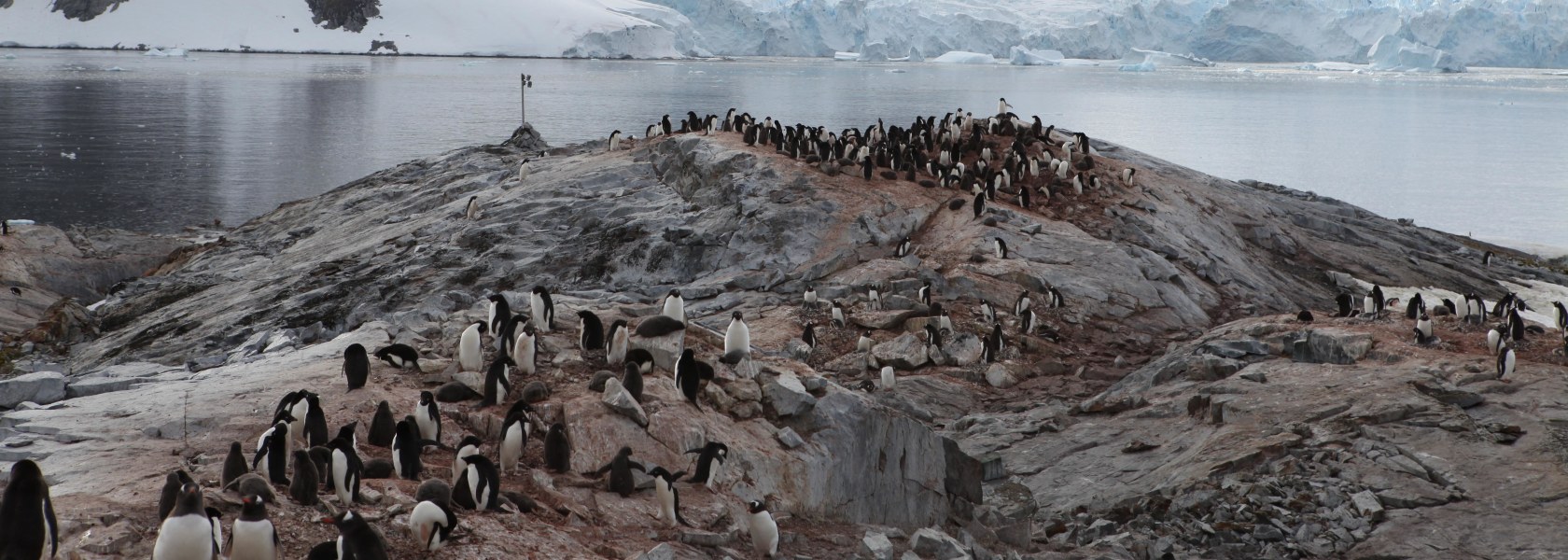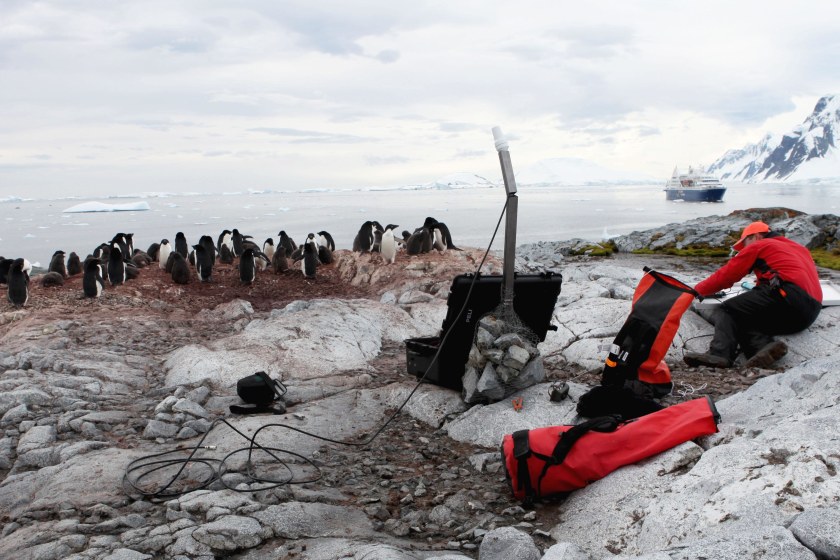 Alasdair Davies / ZSL
Alasdair Davies / ZSL
On World Penguin Day,
which takes places on Friday, scientists are hoping that
satellite-enabled cameras can help keep track of penguins as the birds
waddle through the coldest reaches of Antarctica.
Before,
Tom Hart, a penguinologist (yes, that is his real title) from the
University of Oxford, had to brave the frigid weather to collect penguin
pictures from unconnected cameras as he sought to monitor the birds’
migration patterns and get a better idea of how they are affected by
climate change, overfishing, disease and pollution.
The average temperature in Antarctica in winter, one of the continent's two seasons, is minus 30 degrees Fahrenheit.
Hart
told NBC News that he enjoys working in the field. But solar-powered
cameras that send out photos via satellite could help him collect more
data, more efficiently. “There
are regions we can get to regularly in Antarctica, but this is about
pushing the boundaries to those very remote areas that you can’t access
every year,” he said.
Now,
instead of manually collecting files, he can access them online through
the satellite network built by Iridium, a global telecommunications
company.
 Alasdair Davies / ZSL
Alasdair Davies / ZSL
The current set-up on
Antarctica’s Yalour Islands involves three cameras that transmit photos
via a short-range wireless link to a central hub, which then sends the
photos — along with location data, battery life information and a
temperature reading — to a central server. The cameras can be triggered
with a timer or motion detector, and take two photos seconds apart to
give researchers a sense of motion.
Eventually,
the technology could be sold or leased to researchers in other
hard-to-reach places, or even to security personnel who want to monitor
national parks for poachers. “Imagine
telling researchers that they don’t have to take a 12-hour flight, then
spend eight hours on a boat, and then take a dingy ride to a small
island to collect a memory card that might or might not be empty,”
Jonathan Pallant, a senior engineer at Cambridge Consultants, who
designed the camera, told NBC News. “If
instead you tell these people you can get these pictures sent straight
to your phone within minutes of them being taken, that is something they
are very interested in," he said.
One
of the groups interested in using the technology to track rare wildlife
and spot poachers is the Kenya Wildlife Service. While no price has
been set for the cameras, the goal is to make them relatively
inexpensive. For researchers everywhere, it could prove to be a useful
complement to other cameras on the market, like the hardy GoPro, which
provides video from the animal's perspective but no satellite
connectivity.
If the
satellite-enabled cameras can survive a year on the Yalour Islands, home
to thousands of Adelie penguins, the team hopes to test them for longer
periods of time in even harsher parts of Antarctica. Eventually, even
couch potatoes might be able to browse photos of wild animals beamed in
from the Earth's most remote areas on their laptops. "Obviously,
this is something that has to roll out gradually," Marion Campbell,
program director at Cambridge Consultants, told NBC News.
In
the long run, however, the plan is to make this technology widely
available, she said. "We want to make this a product that can be
installed in much greater numbers all around the world."


















No comments:
Post a Comment